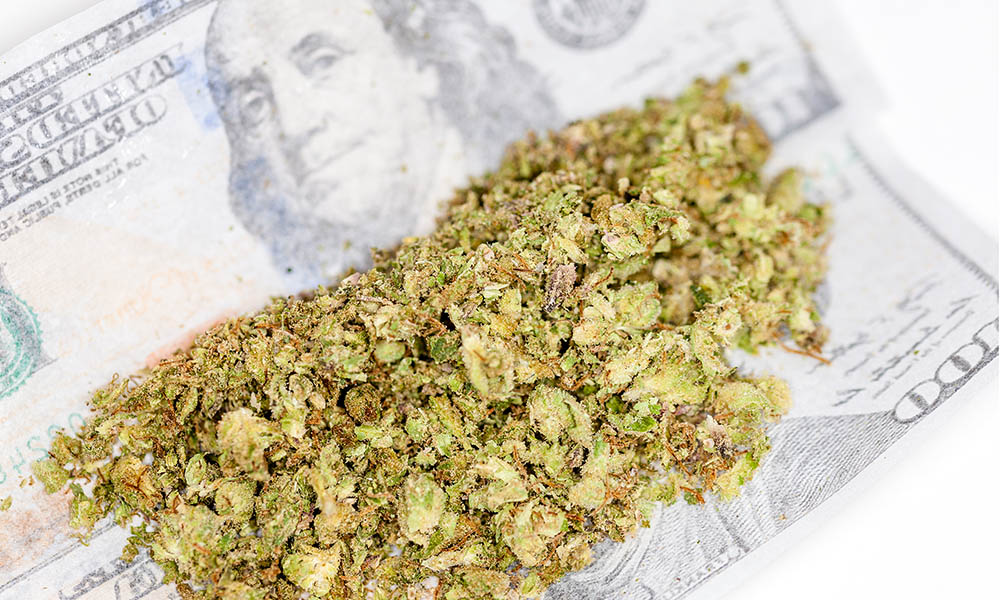
Economics
Legal Wholesale Pot Prices Down 13% in 2017, Still Dropping
According to a report from an independent commodity data services firm, the wholesale price of legal cannabis has fallen precipitously since 2016 and is still falling.
If you grow or sell cannabis in the legal market then this won’t be news to you: Nowadays, you can’t get as much money for a pound of it as you used to. As decriminalization has taken roots in core cannabis markets like California, it has gradually reduced the average wholesale price of the product. People who could once count on raking in $3,000 or more for a pound of what would barely pass for “mids” now have seen their margins shrink as the reduced risk (alleviated by the relative relaxation of enforcement) also shrank the financial reward.
The key word in the above paragraph is gradually, but according to data from Cannabis Benchmarks — a commodity data services firm focused on the legal cannabis market — there’s nothing gradual about the way the wholesale cost of legal cannabis has plummeted over the last 18 months.
However, when the picture is taken in pieces, state by state, a slightly clearer picture emerges. In the two states with the oldest, most established legal markets — Colorado and Washington, which both launched legalization at the start of 2014 — the prices are still dropping, but much more gradually thanks to the stable state of those markets.
The report’s author Adam Koh told The Cannabist, “While prices declined in (Colorado and Washington), they did so fairly gradually. The landscape in those two markets is pretty settled on the whole, so you didn’t see a lot of abrupt regulatory changes like you’ve had in the past — no big overhaul of rules like what took place in the first couple of years of those markets. So businesses were just able to go about their day-to-day operations with less turbulence.”
But in California and Oregon, things are much less serene. In California, the primary issue is oversupply. Despite concerns about the impact the tragic wildfires that swept through many cannabis producing areas in Fall of 2017 might have, the net impact was negligible in a year with a bumper crop of cannabis.
From The Cannabist:
Cannabis Benchmarks report found those losses “were not enough to impact supply dynamics statewide, especially in a year that saw bounteous production otherwise.” That bumper crop, especially in northern California’s famed Emerald Triangle, reportedly made 2017 the “the most favorable harvest season in years,” the report said.
In Oregon, the issue is also oversupply, and it’s so bad that U.S. Attorney Billy Williams held a summit with federal law enforcement representatives and cannabis industry stake holders to express his grave concerns. “Here’s what I know in terms of the landscape here in Oregon, and that is, we have an identifiable and formidable marijuana overproduction and diversion problem,” Williams told the Associated Press.
It’s widely understood that California also has a massive diversion issue: The state has been a supplier of cannabis to the rest of the country for decades. In fact, as the LA Times reported, in 2016 the Golden State cultivated 13.5 million pounds of cannabis, but only consumed 2.5 million pounds.
But with the “grace period” for cannabis produced outside the new regulatory framework expiring in July, the new landscape in California will be — at least on the surface — more stable. Stable in what way remains to be seen; will the enforcement of new regulations do what federal raids and helicopters couldn’t and shut down the grows on the hill? Unlikely, unless the rest of the U.S. somehow loses its taste for “Cali bud,” which this reporter finds especially unlikely.
TELL US, how can states address their cannabis surplus?

























